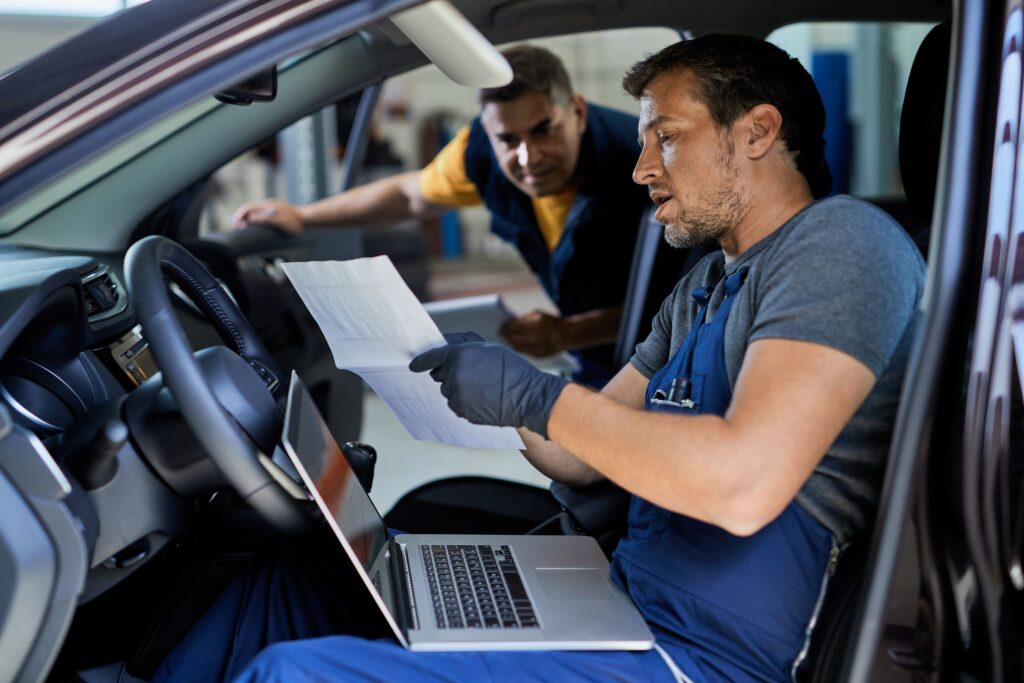The last-mile delivery industry already has extremely narrow margins. Even small operational issues can have a significant negative financial impact on Amazon DSPs (Delivery Service Partners). These setbacks have recently manifested as astronomically high van repair bills, where some invoices have exceeded $20,000 per automobile.
As a result of the industry-wide backlash against Amazon’s fleet management system caused by these unexpected charges, a lot of DSPs and logistics entrepreneurs are rushing to protect their companies. This is more than just a singular billing problem; it serves as a warning about the dangers of relying solely on one platform and the pressing need for more intelligent fleet optimization techniques.
Let’s examine the controversy, Amazon’s reaction, and the important takeaways for logistics experts and DSPs who wish to protect their future in the industry.
Why Amazon DSPs Are Struggling With Unexpected $20,000+ Van Repair Bills
To operate an Amazon DSP business, leasing delivery vans with the Amazon brand, such as the Ford Transit, is necessary. These vans usually cost $500 per month. It appears to be a reasonable cost structure on paper. In reality, though, DSPs are learning about the unspoken dangers of Amazon’s van redeployment procedure, which involves the possibility of vehicle recalls, reassignments, or retirements, which frequently lead to unforeseen inspections.
- Several DSPs claim they cannot afford the more than $20,000 in repairs that have been billed for each van.
- Despite having previously spent $10,000 on app-estimated repairs, one delivery service partner in Washington state received invoices totaling more than $100,000.
- Such fees can quickly exhaust small business owners’ cash reserves, posing existential risks to their logistics company.
This demonstrates how van repair costs can quickly turn a successful DSP into a vulnerable one.
This struggle is particularly important for small and mid-sized DSP owners because excessive and unpredictable repair costs impact more than just one vehicle; they jeopardize payroll, driver retention, and the capacity to fulfill Amazon’s delivery performance requirements.
Inside Amazon’s Van Inspection Process: From The Pave App To Manual Assesments
At the center of the controversy is the Amazon inspection procedure. Initially, the Pave app, which determines repair costs based on photos, was used to evaluate Amazon delivery vans. And the drawback? Estimates based on photos frequently overlooked important damages, resulting in wildly low figures.
Following that, Amazon implemented manual inspections, but these had the opposite effect, producing repair estimates that DSPs characterize as exaggerated.
- In comparison to the initial Pave estimates, many fleet managers reported manual inspections that were ten times higher.
- In one instance, a $10,000 app-based estimate was manually reviewed and increased to $100,000.
- DSPs have no recourse and no predictability because the methods used to calculate the numbers are opaque.
For logistics professionals, this emphasizes the risks of depending exclusively on platform-controlled inspection tools in the absence of third-party fleet management protections.
Amazon’s Response: 20% Cost Coverage And Paused Van Redeployment Program
Amazon announced corrective actions in September 2025 in response to numerous complaints and coverage by Bloomberg:
- Beginning in April 2025, Amazon will pay 20% of the cost of repairs based on estimates from the Pave app.
- DSPs were told to ignore current invoices and wait for the October billing revision.
- A temporary halt has been placed on the van redeployment program, which is the cause of many of these conflicts.
These concessions provide temporary respite, but they don’t deal with the underlying problem, which is that Amazon DSPs continue to face high and erratic fleet repair costs that jeopardize their profitability. The systemic risks are not resolved by merely covering 20%.
The Growing Rift Between Amazon And Its Delivery Service Partners
A deeper divide between Amazon and its delivery service partners is reflected in this van repair controversy. The DSP program was introduced in 2018 to provide entrepreneurs with a low-barrier entry into the last-mile delivery sector. However, operators have noted certain power disparities for a long time:
- Amazon has high standards for uniforms, delivery performance, and operational procedures.
- To pay for van lease and repair expenses, DSPs must approve automatic bank withdrawals, which expose them to unforeseen deductions.
- Withdrawal authorizations are now being canceled by some DSPs to protect themselves, indicating a decline in confidence.
This demonstrates how fleet owners who rely too much on Amazon run the risk of taking on significant liabilities with little control over cost structures.
What This Means For DSPs And Fleet Owners: Risks, Lessons, And Next Steps
The van repair controversy serves as a clear warning to logistics managers, fleet owners, and delivery service partners. It highlights the precarious equilibrium between platform adherence and company viability.
DSPs need to be ready for the following major risks:
- Financial Risk: Redeployed vans could result in six-figure repair liabilities.
- Cashflow Instabiity: Unexpected expenses that deplete reserves cause cash flow instability.
- Risks to Business Continuity: These are damages that could force small logistics companies out of business.
Actionable steps for logistics experts and DSPs:
- To protect against unforeseen fleet repair expenses, keep a reserve fund on hand.
- Investigate independent fleet optimization options to confirm or refute exorbitant fees.
- To lessen the surprise of repairs, spend money on predictive maintenance tools.
- Pay close attention to the terms of the contract, particularly those about billing procedures and van redeployment.
Through proactive actions, DSPs can transition from reactive damage control to fleet management that is sustainable.
How MetroMax BPM Helps DSPs Protect Profitability And Fleet Performance
We at MetroMax BPM specialzie in guiding fleet managers, logistics entrepreneurs, and Amazon DSPs through these precise difficulties. We have developed solutions to safeguard your bottom line because we are both fleet owners and DSP operators, so we are familiar with the risks.
MetroMax BPM enables DSPs to thrive through the crisis in the following ways:
- Fleet Optmization and Maintanence Planning: Optimize your fleet and plan for maintenance to lower your risk of unexpected six-figure repair bills.
- Compliance and Process Support: Expert guidance regarding redeployment guidelines and Amazon inspection procedures.
- Strategies for Financial Protection: Precautions against unexpected interruptions in cash flow.
- Technology-Enabled Fleet Management: Instruments to track van performance, plan the best routes, and cut expenses.
- Training and Consulting: Useful guidance for creating successful, expandable last-mile delivery companies.
MetroMax BPM can support you in safeguarding your fleet, maintaining financial stability, and expanding with assurance, even during uncertain times, if you are an Amazon DSP or the owner of a logistics company.
Conclusion
The controversy surrounding Amazon DSP van repair costs is more than just a disagreement; it marks a turning point for the last-mile delivery sector. Unpredictable repair costs and strict contract terms are no longer viable options for small businesses.
DSPs can transform operational difficulties into long-term competitive advantages by switching from survival to growth mode with the help of partners like MetroMax BPM and the correct fleet management techniques.












